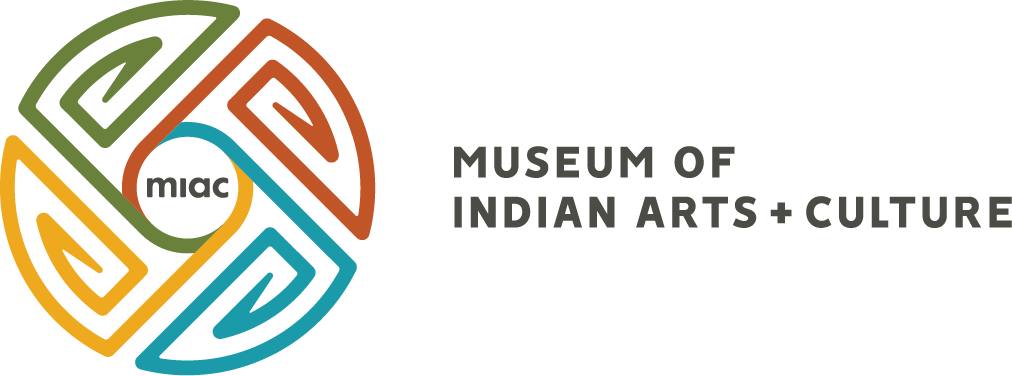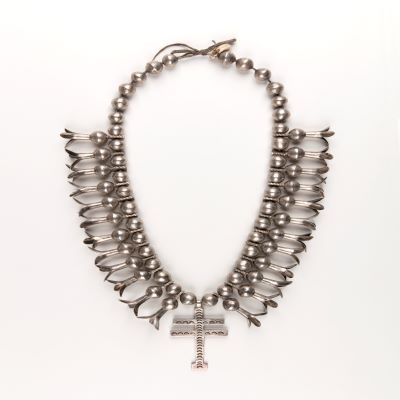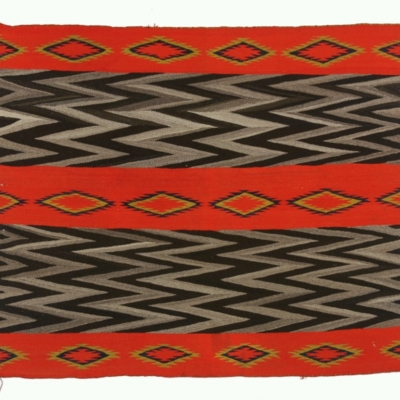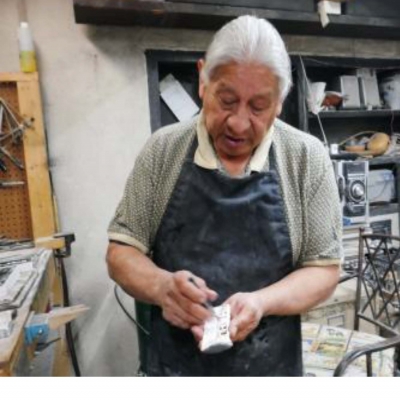Past Exhibitions
Oblique Views: Archaeology, Photography, and Time
October 25, 2015 through May 7, 2017
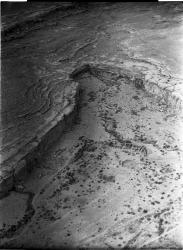
Pueblo del Arroyo
Pueblo del Arroyo lies immediately next to Chaco Wash, and its location inspired its name. When the Lindberghs photographed the site, the circular tri-walled structure on the western extension of the pueblo was being eroded by the wash. Neil Judd excavated a large part of the pueblo in the late 1920s, resulting in the empty rooms visible in both photos. The more modern buildings to the southeast of the ancient pueblo were built by Richard Wetherill in 1899 and served as a boarding house for archaeologists and other visitors. They were converted into the Chaco Canyon Trading Post in the 1930s. The road to Gallup crossed the wash nearby. Photograph by Charles A. and Anne Morrow Lindbergh, 1929.
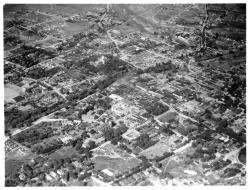
Santa Fe
Even in 1929, Santa Fe was an art center, the state capital, and a historic community. It was still a town rather than a city, however, and agricultural fields can be seen not far from the Plaza (approximately at the center of the photo), the heart of the social and economic life of the town. The old capitol building can be seen surrounded by trees in the upper center. Trees also mark the Santa Fe River, which forms a wandering diagonal from lower left to upper right. North is to the right in this photograph. Photograph by Charles A. and Anne Morrow Lindbergh, 1929.
For the first time in Oblique Views: Archaeology, Photography, and Time, large prints of Heisey’s stunning images will be paired directly with the Lindberghs’. The exhibition opens October 25, 2015 and runs through May 7, 2017 at the Museum of Indian Arts and Culture.
During 2007 and 2008, flying at alarmingly low altitudes and slow speeds, Adriel Heisey leaned out the door of his light plane, and holding his camera with both hands, re-photographed some of the Southwest’s most significant archaeological sites that Charles Lindbergh and his new bride Anne photographed in 1929.
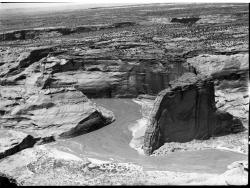
White House Ruin
White House Ruin is composed of two parts: a larger room block on the canyon floor that rose to four stories high in the back, and another set of rooms built in a rock shelter immediately above. The upper rooms could have been reached from the fourth-story roof of the lower structure. The bulging, stained walls of the rock face above the rock shelter have made the site a favorite photographic subject. Timothy O’Sullivan photographed the site in the mid-1870s, and it has been well photographed ever since, including by Ansel Adams. Photograph by Charles A. and Anne Morrow Lindbergh, 1929.
